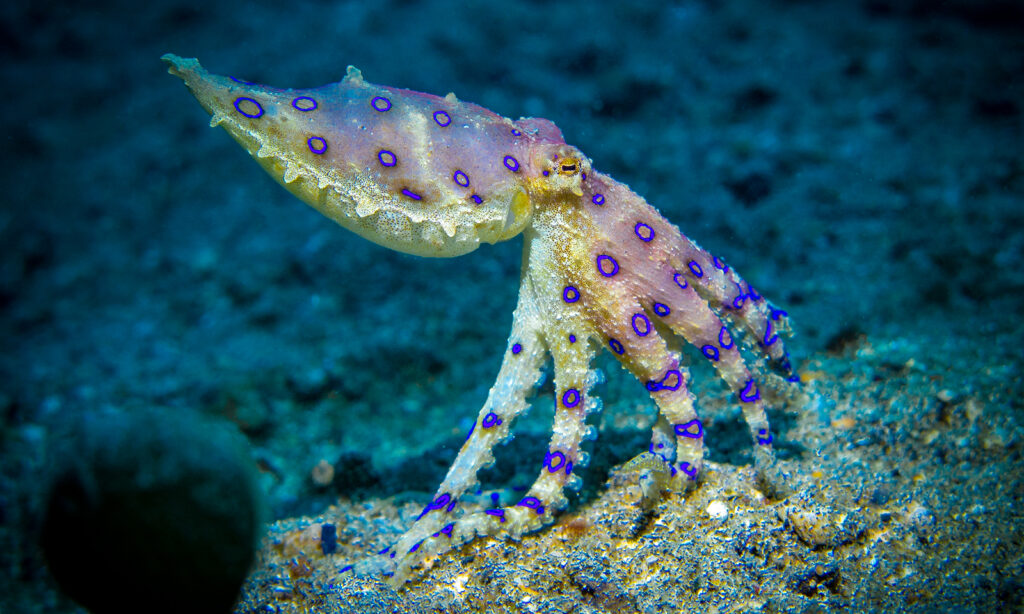With a twitch of its muscles, the tiny, venomous greater blue-ringed octopus, native to the warm waters of the Western Pacific and Indian oceans, changes the iridescent circles on its surface according to its intentions. The split-second wardrobe change transforms the creature’s brown-and-blue skin patterns from camouflage to a brilliant warning sign to would-be predators.
A group of UC Irvine engineers was so intrigued by this survival mechanism – quite handy for an animal extending just 4 inches long – that they created a device that recreates it. They reported their findings in December in the prestigious journal Nature Communications.
“I like to think of it as bio-inspiration,” says Alon Gorodetsky, an award-winning professor of chemical and biomolecular engineering and the paper’s lead author.

After immigrating from the Soviet Union as a child in the 1980s, Gorodetsky, who followed his parents into engineering, became enraptured with cephalopods in 2011 after watching a video of an octopus emerging from its camouflage on a rock, as if the rock were turning into an octopus, as he described it.
“My jaw dropped, and I said I’m going to throw away half of what I’m doing and work on something related to these animals,” he recalls. “I’m a huge science fiction fan, and when you see an actual shape-shifter in real life, it’s a heck of a moment.”
Cephalopods, such as squid, octopuses and cuttlefish, are such complex animals that we are still far from mimicking them, he says, “but we can capture little slices of what they do.”
The Irvine scientists’ octopus-inspired device resembles a small, four-layered sandwich, says co-lead author Preeta Pratakshya, who recently received her Ph.D. from UCI’s Department of Chemistry. Between two layers of transparent electrodes lies a stretchable membrane and an active layer made of novel organic molecules that can be manipulated to change their appearance and infrared signature.
“It’s a major advance,” says Gorodetsky, who says the “most exciting” application would be as camouflage for the military, making troops and equipment less visible and less detectable by heat-seeking devices. Additionally, the new molecule is also extremely stable, he says, capable of withstanding years of storage and light without degrading.
“Everyone knows if you take a shirt and leave it outside for a month, it will change color,” he says. “This doesn’t have that problem.”









